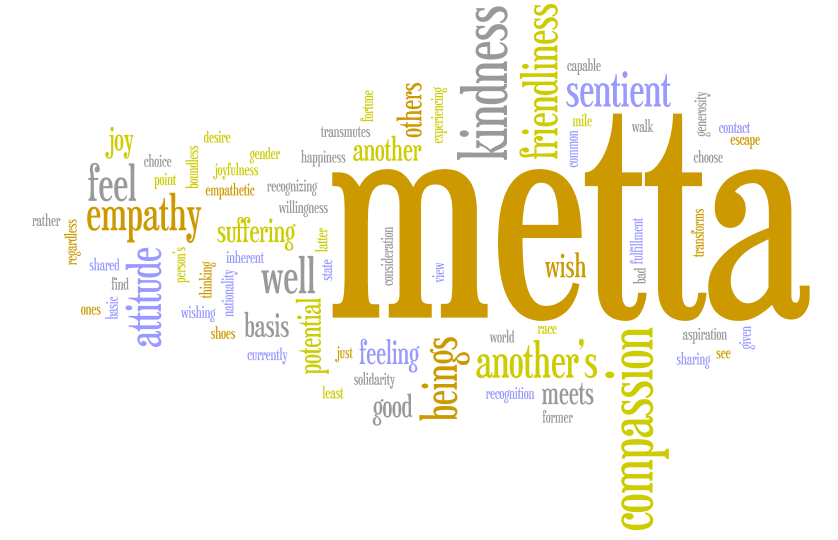In a previous post, I asked you to consider the example of someone insulting or offending us, we get
angry and immediately think of things we would like to say or do in
response. What would our motivation be for
saying or doing any of them? Although you could spin it in several directions,
such as to clarify the others’ mistake, to defend yourself, to get back at
him/her, to put the other in his place, to just hit him, etc., they actually
have one thing in common – they are motivated by the feeling that they will
make you happier if you do it.
Now here’s
the funny thing – if you were to examine the motivation behind why the other
person said or did whatever it was that he did, it’s exactly the same
reason. He thought it would make him
happier. In this respect, you two are
always on the same wavelength. So one way to work with the negative feelings is
to recognize that there is no fundamental difference between either of your
perspectives. The problem is that our perspective usually does not include the
other’s perspective.
Humans suck
at seeing another’s perspective. There
are many reasons for it, but a lot of it is just how the human brain
works. There is a cognitive bias
that is so basic to all human thought that it is called the Fundamental Attribution Error. When someone does
something, especially something annoying, we tend to attribute the causes to something internal and/or essential about that person - he is just a jerk. In contrast, when we do something that could be annoying,
however, we tend to attribute the causes to external situations. We had no other choice, or we're in a hurry.
It's interesting to note that to ourselves, we always have a “good” reason for why we
are doing whatever selfish thing it is we’re doing.
The corollary
to the fundamental attribution error is what might be called the fundamental
self error – that we relate everything to ourselves as if everything is a
personal affront or benefit. The other part of a fundamental self error is that
we believe there is a fundamental self – something unchanging at the core that
things happen to. If we’re a stable permanent thing, then any changes that occur are from the outside happening TO us. We get to pretend
constantly that we’re the victim, even of our own feelings. For example, how often have you
said, “That thing you did MADE me mad,” or “I fell in love with you because you’re so sweet?" We interpret even our own feelings as something that happened to us because of external circumstances.
The irony is
that we take no responsibility for our own actions and reactions, but we call
this freedom.
 Wouldn’t true
freedom be the ability to not feel controlled by the situations and our
emotional reactions? Wouldn’t true freedom be the ability to see all the
perspectives? If we believe that free
will is the ability to make our own choices, when our perspective is so narrow
that we can’t even understand the choices available to us, how can we have any
free will? Were you free to make a choice that you didn’t even know you had?
Wouldn’t true
freedom be the ability to not feel controlled by the situations and our
emotional reactions? Wouldn’t true freedom be the ability to see all the
perspectives? If we believe that free
will is the ability to make our own choices, when our perspective is so narrow
that we can’t even understand the choices available to us, how can we have any
free will? Were you free to make a choice that you didn’t even know you had?
Psychologist
Roy Baumeister said, “Self-control
counts as a kind of freedom because it begins with not acting on every impulse.
The simple brain acts whenever something triggers a response: A hungry creature
sees food and eats it. The most recently evolved parts of the human brain have
an extensive mechanism for overriding those impulses, which enables us to
reject food when we’re hungry, whether it’s because we’re dieting, vegetarian,
keeping kosher, or mistrustful of the food.”
So freedom begins when we STOP acting, or at least slow down
the reacting. This is
also the first step to being open to seeing other perspectives. As long as we continue to act in our habitual ways, getting into the same arguments over and over again, continuing to believe that we're right, we will never be free.
This is where meditation can be such valuable training. One technique that can help us begin to slow the automatic processes of reacting down is called Urge Surfing, which can be read about here and there is a nice short guided example available here.






















